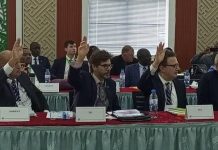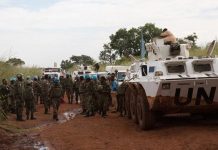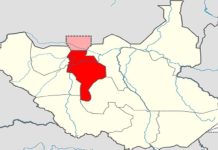Africa-Press – South-Sudan. LAND IS A UNIQUE natural resource. Natural resources include land and all other materials that exist only because of nature.
They serve as the platform for other natural resources. All natural resources (e.g. water, air, minerals, metals, animals, plants, oil, coal, and other mineral resources) are on, above or below land.
This makes land the chief of all natural resources. It is why land is at the centre of the development discourse in many African countries.
Despite land’s importance, other natural resources are necessary for everyone’s livelihood. One we cannot do without is water.
Water tenure security, as with land tenure security, relates to the security that supports the structures of accessing, holding, occupying, owning, using, transferring and exercising rights that subsist on water.
Water tenure is people’s relationship with water and its resources (e.g. drinking water, fish, glaciers, snowfields, irrigation water, salt and several water-based minerals).
This people-to-water relationship – which manifests in how people access, use, hold and exercise rights that subsist on water – can have legal and social dimensions.
It is also deemed essential to development. Nevertheless, unlike land, not much is said about water and why water tenure security should matter in Africa.
POTENTIAL
Whether below or above ground, Africa has rich water resources. However, our resource richness does not always translate into wealth for citizens.
We lack creativity and innovation when it comes to using our resources to better our lives.
A tremendous body of water flows across African borders and boundaries, below and above African lands.
This makes cooperation in managing water resources a crucial aspect of natural resource governance in the continent.
According to the World Bank, about 90% of Africa’s water resources fall within 63 international catchments and criss-cross multiple borders.
Several African rivers stretch beyond national borders. For instance, Africa’s third-longest river, the Senegal River, span Guinea, Mali, Senegal, and Mauritania.
It serves as the lifeblood of these countries in the areas of water for irrigation, energy and drinking.
As a continent suffering from drought and water poverty, all these rivers should be used as development tools rather than sources of conflict.
The African Development Bank or AfDB notes that “more than 75% of the African population uses groundwater as its main source of drinking water”.
It notes that “this is particularly so in North African countries such as Libya and Tunisia, as well as parts of Algeria and Morocco, and southern African countries such as Botswana, Namibia and Zimbabwe”.
The AfDB’s study indicates that rainfall in Africa is about 670mm a year, with more significant variation in time and place, with the mean variability of rain (the average amount of rainfall that varies across African regions over a year) typically 40%.
This is much higher than in temperate zones of the world.
Regarding water usage, of the total amount of water drawn from rainfall, 85% is for use in agriculture, 9% is for community water supply, and 6% is for industry. For Africa (as a whole), the amount of water withdrawn for these three critical uses amounts to only 3,8% of internal renewable water resources.
The AfDB says “this represents a low level of development and use of water resources on the continent”. This should mean water wealth for Africa.
ABUNDANCE AND SCARCITY
A recent World Bank study shows that one in three people face water scarcity in Africa.
This indicates that Africa is going through enormous water stress – situations where there is not enough water of sufficient quality to meet the demands of people and the environment.
Water is not just an issue for drinking. It has a lot of other direct and indirect links to our quality of life.
For instance, ours is a continent where many young women struggle to access equal education because of a lack of menstrual hygiene facilities in schools.
Poor water quality is the root cause of up to 80% of diseases.
Nearly 63% of people in sub-Saharan Africa struggle to access essential water services in urban areas.
The World Bank’s study at country level indicates the enormity of water stress in Africa: One-fifth of the deaths and disease burdens are linked to poor water quality, hygiene and sanitation.
In Benin, four out of 10 rural households lack basic access to water. In a country like Niger, the average woman spends about 13 full days of her year collecting water. These scenarios reflect water poverty in Africa.
BOLD ACTION
When a continent is water rich but suffers from water poverty, it reflects a lack of management acumen to use natural resources efficiently.
Bold actions are needed to address the obstacles to water security wherever they exist on the continent.
A fundamental challenge is ensuring that people have access to water, while promoting economic growth that would improve the living conditions of African citizens and the environment.
A starting point should be to achieve secure water tenure to deliver water access. This means increasing the percentage of the African population that has water immediately available through expanded and improved water sources for multiple uses.
Whether below or above ground, the water flows across African borders and boundaries are public goods.
They need to be controlled and managed to be shared to ensure that they supply Africans with their water needs without compromising the sustainability of the environment.
For More News And Analysis About South-Sudan Follow Africa-Press






